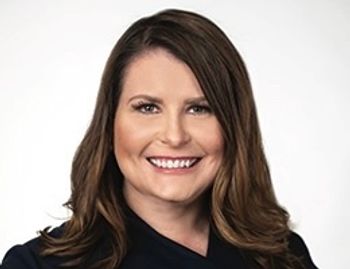
How women can improve their chances of becoming CEOs | HLTH Conference
Most chief executives are men, but women are making progress in getting to the C-suite. Mindy Kairey of Korn Ferry says more companies are looking for leaders with empathy and positivity.
Women are gradually making more progress in becoming chief executive officers, but most of those in the corner office are still men.
As of early November,
Mindy Kairey, senior partner of Korn Ferry, a consulting firm, talked at the HLTH Conference about ways women can rise up the ranks.
Korn Ferry recently released a
“What we found is that these women take very different paths,” Kairey said. “There’s no one straight linear direction on any of these women. It’s all over the map. Everybody’s different. Everybody’s unique.”
At the same time, some common threads emerged from the discussion of women leaders, and they can inform younger women who dream of running companies. (See video of our conversation with Mindy Kairey. The story continues below.)
Women can bolster their chances of rising to chief executive officer by putting themselves into positions where they are running the finances of an organization. Many women rise in marketing and sales, and those are valuable roles, but companies want to see executives who know how to manage profits-and-loss centers.
“Somehow or another at the end of the day, try to be managing a business,” Kairey said. “Because at the end of the day, your ability to demonstrate that you can do that, particularly with the competitive and financial pressures that exist in the market today, every board wants to have confidence that you know how to manage the business.”
Women should also look to find ways to earn seats on the boards of other corporations or non-profit organizations, Kairey said. Even voluntary positions on other boards can be valuable.
Among the women CEOs interviewed in the Korn Ferry report, 70% said early experience serving on board proved to be very valuable. They developed leadership skills and also gained a higher profile.
“That perspective of working with other companies is really helpful and additive to your overall experience, and positions you well to be ready to step into the CEO site where you’re reporting to a board,” she said.
Increasingly, companies are also looking for chief executives who are empathetic and know how to get the best out of workers. Boards are also looking at leaders who know how to collaborate with their teams.
Companies don’t just want strategic thinkers. They want leaders who connect with their employees and inspire them.
“One of the things we’ve seen in spades coming out of the pandemic is, more often than not, it’s a requirement by the board for the CEOs that they’re hiring … that they have empathy, that they are caring, that they are genuine, that they have high EQ, that they are building a culture of positivity and positive energy,” Kairey said.
“And quite frankly, women do that really well,” she added. “So let’s use it.”
Organizations that are looking to help provide women with more opportunities for executive roles should look at the qualifications, because some demands may exclude some women, and some minority candidates.
Companies also require advanced degrees, and some prefer graduates from Ivy League schools, preferences which may shrink the pool of candidates and create impediments for female candidates and people of color.
More women should be aiming high and striving to be chief executives, the Korn Ferry report suggests. Some women leaders said they didn’t consider themselves as potential CEOs.
More than half of the women who were interviewed touted the merits of embracing challenging assignments earlier in their careers and delivering results. Those wins helped women gain confidence and credibility in their organizations.
Korn Ferry worked with the Rockefeller Foundation on the report. The Rockefeller Foundation has set a goal of seeing women leading 20% of the Fortune 500 companies by 2025.






















































































